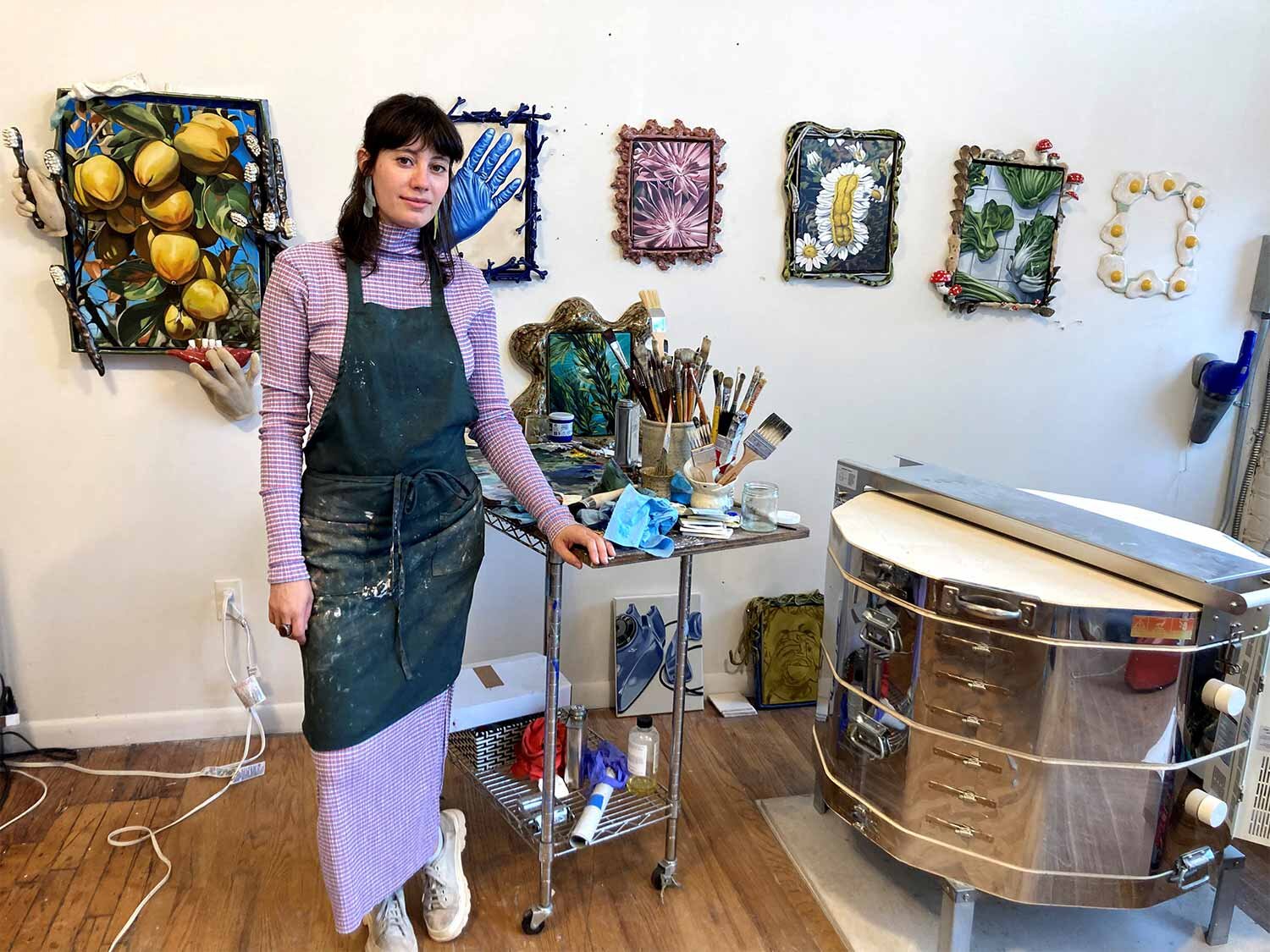In the Studio with Stephanie Temma Hier
INTERVIEW
Published Sept 22, 2020
What have you been up to this summer? Have you been spending time in the studio?
This summer was a pretty busy one. I spent most of my days in the studio working on my first exhibition in China, which opened in August at Gallery Vacancy, Shanghai. The show includes two free-standing sculptural works and six wall works, which for me feels like a big advancement in my practice. I’ve spent the last few months pushing the sculptural aspect of my work and creating more elaborate frames. I also spent a significant part of the summer and the quarantine mixing my own glazes and experimenting with some new ceramic techniques.
What drew you to incorporate ceramics into your work?
There were many reasons why I started to use ceramic in my work. I would consider myself first and foremost a painter, and I have a fairly traditional painting background. Because of my Eurocentric painting background, I’ve always had an urge to push back on this tradition and to somehow incorporate my love of craft and folk art. I wanted to create a non-hierarchical space where all forms of art and tradition could be examined and understood side by side. The synthesis of ceramic and oil painting negotiates this from many angles, with conversations about content versus form, material histories, and feminist critique. The work also begins to blur the line between painting and sculpture, which feels very satisfying.
What is the relationship between the painting and the ceramic frame that surrounds it?
The relationship between the painting and ceramic frame is really the crux of my work. I think they often create new narratives together, as there is usually one common denominator between them, whether it’s color, subject matter or composition. For me, the really exciting part of my work is when the pieces are finally assembled after sculpture and painting are both complete and I can discover the narratives they form together.
It seems that your painting practice takes cues from northern European still lives - how does art history inform your work?
My background in traditional European painting definitely formed the foundation on which I built my practice. Naturally, there is a push and pull between paying homage to these masterworks and wanting to break-free of their dogma. Whether we like it or not, these images formed a baseline from which contemporary visual culture has sprung. Old-master influence can be seen in stock imagery, cook book photographs, advertising, Instagram and so on. Within my practice I am actively trying to parse this reality and also create something new from it’s foundation.
What have you been doing in your free time to relax this summer?
I have many pastimes! Nothing is more relaxing for me than coming home after a long day in the studio and cooking something nice for dinner. I cultivated a little vegetable garden in my backyard this summer as well, which has been a great refuge from the city. I also love to read, and often find inspiration in the pages of books. I think much of what I do in my spare time informs my work and that my taste for living permeates my work completely.





